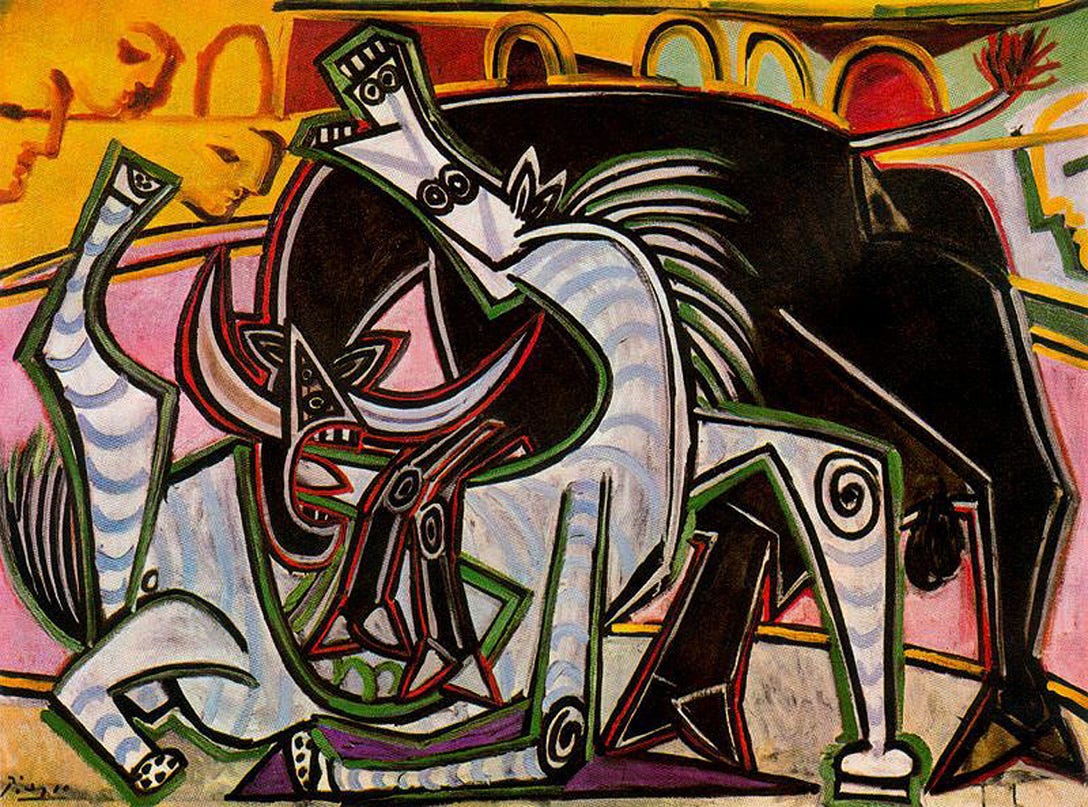Bullfight by Pablo Picasso, Spain 1934
As I have suggested, the three types of prehistoric group society could have been governed by rules created through cooperative knowledgeable decision making, or by third party mechanisms rooted in other-worldly or secular beliefs, or through system formations. In this post I further discuss the nature of system emergence.
A ‘system’ is any complex set of interconnected things (units or parts) working together as a mechanism with a common structure or function. It may refer to the prevailing social or political order. It describes any composite whole with parts that move or interact. Examples include the brain, the body, the price mechanism, and certain types of nation states. In social theory systems are coded, that is they operate according to one or a set of rules that orient the interactions of units. I now explore how it might have been possible for small systems to emerge in prehistoric societies under the pressure of contingent intentionalities.
My claims
I propose two novel claims.




